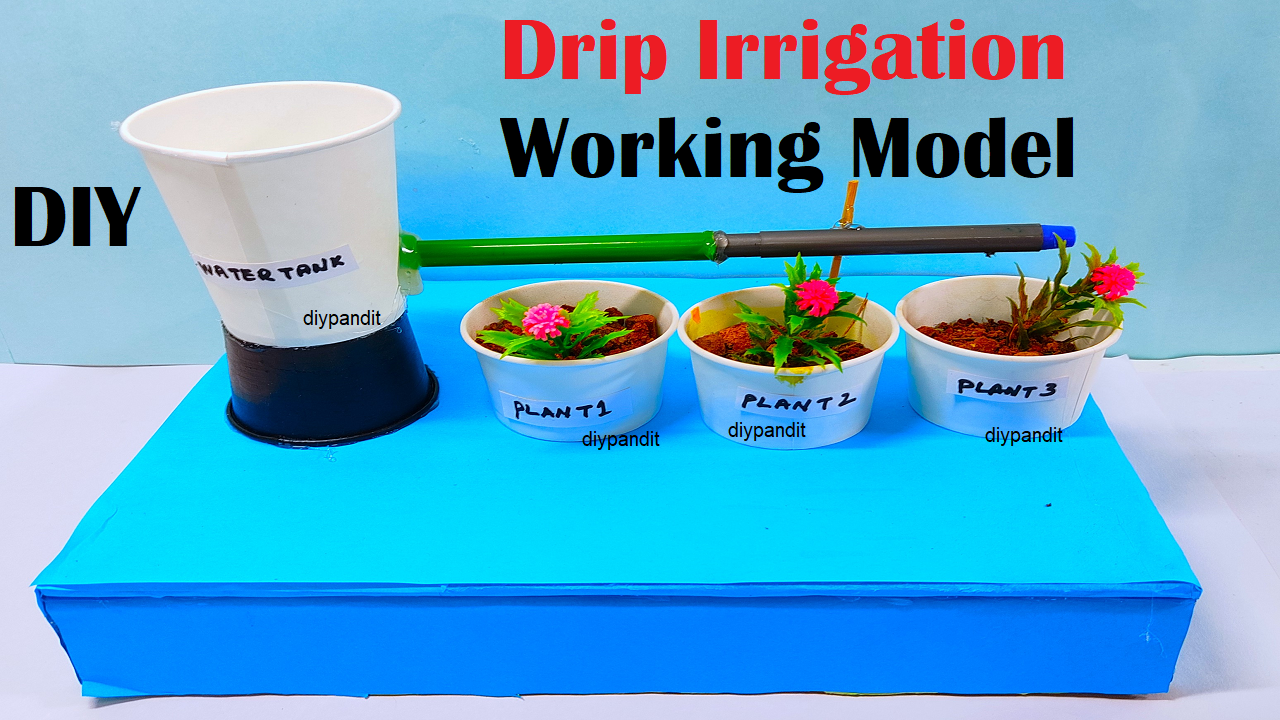Today, I am honored to stand before you to present our science project on the remarkable and practical innovation known as the Drip Irrigation System.

In a world where water conservation and efficient agricultural practices are of paramount importance, our project highlights a solution that can revolutionize the way we irrigate crops and gardens.
But first, let’s set the stage. Agriculture is the backbone of our society, providing us with the sustenance we need to survive.
However, traditional irrigation methods are not only inefficient but also wasteful, leading to the depletion of precious water resources and damage to the environment.
This is where our Drip Irrigation System comes into play.
Our project revolves around the implementation and understanding of this ingenious irrigation method.
At its core, drip irrigation is a precise and controlled watering technique that delivers water directly to the root zone of plants through a network of pipes, tubes, and emitters.

Unlike conventional flood or furrow irrigation, which can result in water runoff and evaporation, drip irrigation significantly reduces water wastage.
So, why is this technology so important, you may ask? Here are a few key reasons:
- Water Conservation: Drip irrigation reduces water wastage by delivering water directly to the plant’s root zone, minimizing evaporation and runoff. This results in a substantial reduction in water usage, making it an eco-friendly choice.
- Improved Crop Yields: Because it delivers water and nutrients precisely where they are needed, drip irrigation can lead to higher crop yields. This is especially crucial in regions with water scarcity, as it allows farmers to optimize their production while using less water.
- Energy Efficiency: Drip irrigation systems typically require less energy to operate compared to traditional methods. This is a significant advantage in terms of reducing carbon emissions and overall environmental impact.
- Weed and Disease Control: By targeting the root zone and avoiding wetting the entire field, drip irrigation also helps reduce weed growth and the spread of diseases, further enhancing crop health.
- Customizable and Scalable: Drip irrigation systems can be tailored to suit various crop types and field sizes. They are highly adaptable and can be expanded or reduced as needed, providing flexibility for farmers.
In our project, we constructed a small-scale drip irrigation system to demonstrate its functionality and benefits. We also conducted experiments to compare its efficiency with traditional irrigation methods, and the results were remarkable. Not only did our system use significantly less water, but it also produced healthier and more robust plants.
In conclusion, the Drip Irrigation System is not just a scientific concept; it is a practical solution that addresses critical global challenges, such as water scarcity and sustainable agriculture. By adopting this technology, we can ensure a more efficient use of our precious water resources while improving crop yields and reducing environmental impact.
As we move forward, it is our hope that the implementation of drip irrigation systems becomes more widespread, benefitting farmers, communities, and the planet as a whole. Through innovation and science, we have the power to make a positive difference in our world, one drop at a time.
Thank you for your attention.

